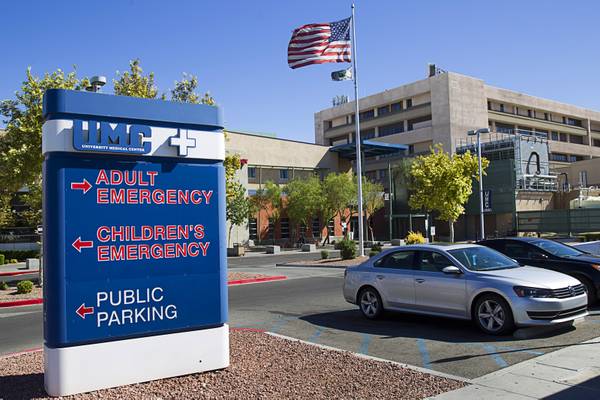The Las Vegas Medical District is growing. But in the face of ongoing health care challenges in Southern Nevada, Ward 1 City Councilman Brian Knudsen, whose ward includes the district, still thinks the city could advance the district further.
The city council received updates on the Medical District for the first time in three years Wednesday from Shani Coleman, deputy director of legislative affairs for the city. It was also the first time that Knudsen, who was elected in June after campaigning for strengthening the Medical District and bringing a children’s hospital to the area, had a chance to weigh in publicly as a councilman on the future of the district.
Since 2013, Las Vegas has invested over $73 million into the Medical District, a 684-acre neighborhood home to four hospitals and concentrated around the intersection of Charleston and Martin Luther King boulevards, Coleman said.
Those investments aim to help the city realize its lofty vision for the area: turn the Las Vegas Medical District into Southern Nevada’s hub for clinical care, research, wellness, education and training and the “premier medical district” in the entire southwestern United States by 2030.
That vision is ambitious, especially given that Nevada ranks in the bottom 10 states for quality health care, according to the U.S. Department of Health and Human Services’ Agency for Healthcare Research and Quality. Nevada and Clark County also face ongoing doctor shortages, including shortages of specialists, though modest gains have been made in recent years.
Nonetheless, the Medical District is expected to have created more than 4,000 jobs and to have brought in $30 million in government revenue by 2020, Coleman said. After another decade, the city hopes to see over 16,000 jobs in the district and a total economic impact of $2.42 billion.
“This is just really exciting, and something everybody’s been so involved in, in bringing this about,” Mayor Carolyn Goodman said of the ongoing projects in the area.
In the short-term, Las Vegas plans to invest an additional $121 million into the Medical District, Coleman said. That money will support some of the costs of the planned bus-rapid transit system along Maryland Parkway and extending through the district, an effort to bring Wi-Fi services to the district and a mixed-use parking and commercial building being developed by the city, UNLV and University Medical Center.
“This particular concept that you see here is about 900 parking spaces, includes about 60,000 square feet of office space and about 40,000 square feet of retail on the ground floor,” Coleman said of the planned new building, to be located at Shadow Lane and Wellness Way.
Additionally, the city is making progress on the GoMed Project, a Department of Transportation-funded effort to bring autonomous vehicles to Las Vegas that will connect passengers from downtown to the Medical District, Coleman said.
Although he praised the work of city officials who have advanced and supported the Medical District, Knudsen stressed that medical care in Las Vegas has room for improvement and that barriers still exist for further development in the district. He shared that leading up to the birth of his child, doctors at UMC told him and his family to “go out of state” because services in the hospital and others in Nevada lacked the services they needed.
“Having a child at UMC is not the experience anyone wants,” Knudsen said.
The region is struggling to retain physicians and specialists as well, according to Knudsen.
“In the last six months, my pediatrician has left Las Vegas, our immunologist retired early because he didn’t want to stay in Las Vegas, (and) our EMT surgeon just moved to San Diego because, I believe, there’s better reimbursement rates,” he said.
To compete with other communities and benefit residents, Knudsen said the city must rigorously increase its medical services in anticipation of continued population growth, learn more about how the health care industry works and come up with a comprehensive strategy to improve health care quality and access in the region.
“We need to understand what it is that will incent specialists to come into Las Vegas that will have the greatest impact on our population,” he said.

